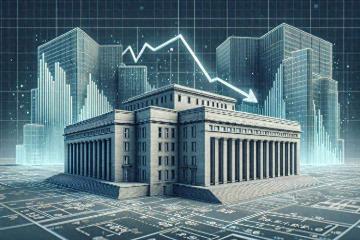Eurozone Economy: Policy and Currency in Focus
Advertisements
The economic landscape in Europe continues to evolve, driven by a plethora of factors that include inflation, anticipated changes in interest rates, and overall economic performanceAs we approach the end of the year, forecasts suggest that the exchange rate of the Euro against the US dollar may settle around 1.05 USD, although projections vary widely between 0.98 and 1.10 USDThis uncertainty provides fertile ground for discussions among economists and analysts alike.
Inflationary concerns have resurfaced, leading many to speculate on potential shifts in monetary policy by the European Central Bank (ECB). The prevailing sentiment among economists indicates that the ECB may be inclined to pause or even halt its series of interest rate cuts come springA survey by Bloomberg of various economic experts reveals a strong consensus that the ECB will implement four rate cuts of 25 basis points each in 2025. Interestingly, there seems to be an agreement that the bank will cut rates next week and again in March
Advertisements
However, opinions diverge when considering the forecast for the deposit rate—currently at 3%—by year’s end, with estimations ranging between 1.25% and 2.5%.
A predominant concern among analysts is the inflation rate, which continues to hover above the ECB’s 2% targetConcurrently, there is an underlying anxiety surrounding potentially disappointing economic growth in the coming yearsPolicy-makers have yet to alter their stance markedly; recent discussions in Davos reiterated their intention to lower rates further, under the expectation that inflation will stabilize at around 2% over the next few monthsUntil they process the quarterly forecast in March—which is anticipated to reflect shifting economic policies in the United States—they are unlikely to make significant policy changes.
Piet Christiansen, the Chief Strategist at Danske Bank, articulates that decisions regarding interest rates in January and March appear predetermined
Advertisements
He suggests that as the ECB approaches a neutral rate, there will be heightened debate among policymakers, predicting the April meeting will become a critical battleground for these discussions.
In the eyes of many economists, the neutral interest rate—which neither suppresses nor stimulates demand—is estimated to lie between 2% and 2.25%. Interestingly, a majority believe that this threshold will be reached by JuneThe 2% mark is recognized as the median forecast for that month, and the market anticipates a total of three rate cuts by that time, with four potential cuts before December.
As posited by senior economist Davide Powell from the Eurozone, an overall expectation points toward the ECB cutting rates by 100 basis points throughout the yearHowever, he hypothesizes that after March, the pace of easing might shift toward a more quarterly approach, indicating a possible slowing of the previous aggressive easing monetary policy.
The economic outlook for the Eurozone is already clouded with uncertainty
Advertisements
A significant portion of survey respondents—approximately two-thirds—believe that the ECB will refrain from providing formal guidance on where they intend to set borrowing costsThis perception stems partly from concerns regarding the impact of U.Seconomic policies on the growth prospects of the 20-member Eurozone.
Amid these discussions, former Swiss National Bank president Philipp Hildebrand voiced concerns at the World Economic Forum, emphasizing that while many foresee minimal immediate impact on price pressures in the region, anxiety over upward risks persistsDennis Shen from Scope Ratings complements this sentiment, suggesting that the ECB's future actions may not mirror current market anticipationsHe indicates that recent progress in cooling core and services inflation has stalled, and low unemployment continues to exert upward pressure on wages and pricesShen adds that the enduring impacts of trade conflicts and deglobalization could continually affect inflation expectations, advocating for a cautious approach by policy-makers.
European Central Bank President Christine Lagarde remains steadfast in her belief that inflation will hover around the intended 2% target this year
- US Indices Extend Gains for Fourth Day
- Localized Digital Trade Innovations
- Navigating Europe's Persistent Industrial Slump
- Eurozone Economy: Policy and Currency in Focus
- EU Balances User Rights, Tech Innovation
Nevertheless, as December witnessed a slight uptick in inflation, coupled with service price increases outpacing the central bank’s target, analysts suggest the risks surrounding the ECB’s inflation outlook are becoming increasingly balancedWith economic downturn risks dominating discussions, the call for adaptability in response to fluctuating economic situations intensifies.
Ulrike Kastens, a senior economist at DWS International, expresses concern over the weakening growth rate and the growing confidence in inflation maintaining target levels in the medium termThis scenario leads to pivotal questions regarding the appropriateness of a more expansionary monetary policy as a stimulus for economic growth.
Despite the prevailing anxieties surrounding the Euro’s value, many survey participants predict the Euro will not surpass parity with the dollarSince a notable decline at the end of September, this possibility has ignited apprehension among ECB observers

Your email address will not be published.Required fields are marked *
Join 70,000 subscribers!
By signing up, you agree to our Privacy Policy